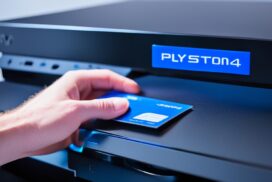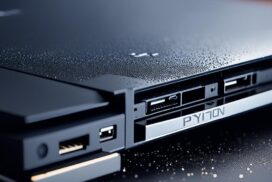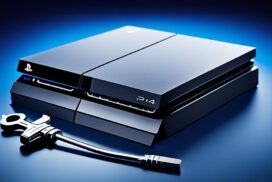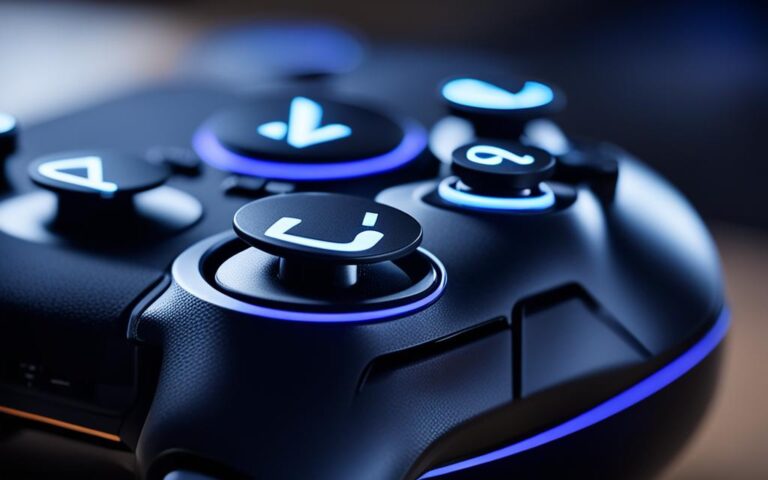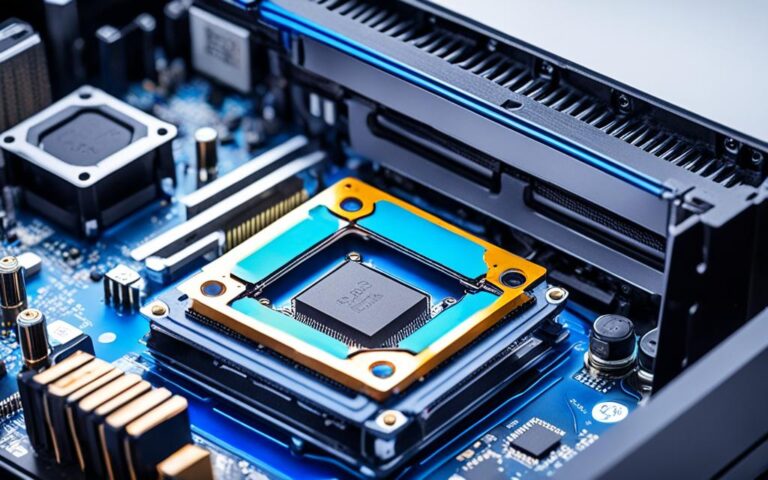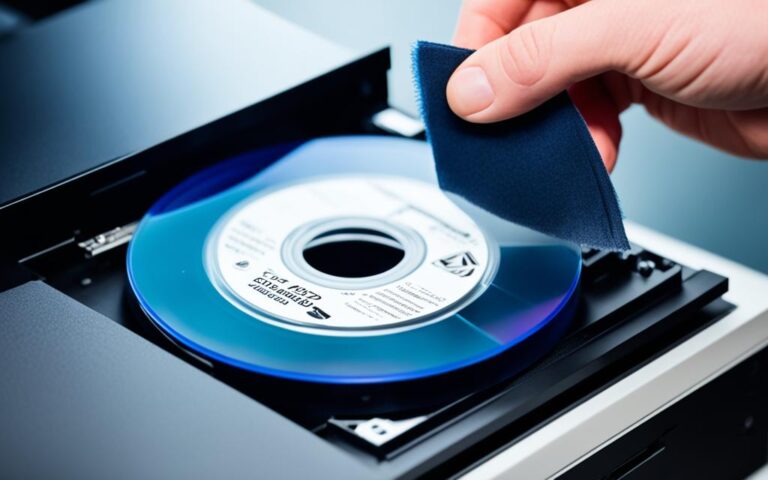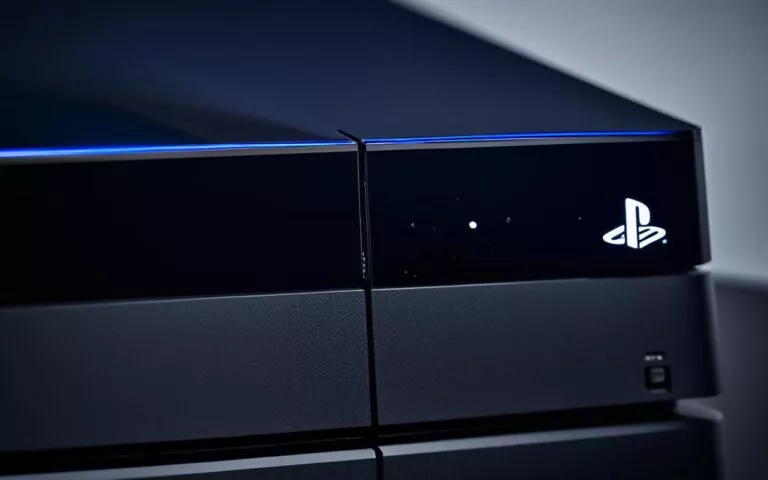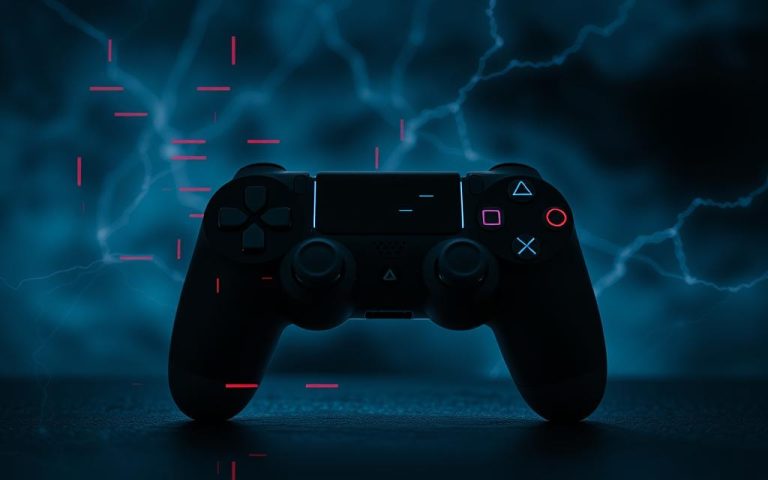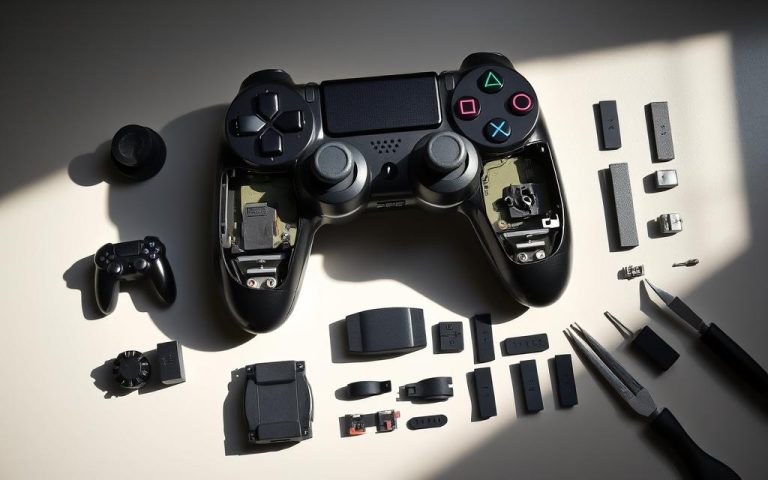Fixing the PS4’s Eject Button Malfunction
The PlayStation 4 (PS4) is a popular gaming console that provides hours of entertainment. However, users may encounter disc ejection problems, which can be frustrating. Whether you own the original PS4, PS4 Slim, or PS4 Pro, unwanted ejections can occur due to issues with the eject button, disc, software, or hardware.
If you are experiencing disc ejection problems with your PS4, there are troubleshooting steps you can take to resolve the issue. This guide will provide you with the necessary instructions to troubleshoot the PS4 eject button and fix disc ejection problems. From cleaning the console to updating the software, we have you covered.
Before we get started, it’s important to note that if your PS4 is still under warranty, it is advisable to contact Sony customer service for assistance. Let’s dive into the troubleshooting steps to fix the PS4 eject button and resolve disc ejection problems once and for all.
Troubleshooting PS4 Disc Ejection Issues
When experiencing disc ejection problems with the PS4, there are several troubleshooting steps you can follow to fix PS4 eject button problems and resolve PS4 disc ejection troubleshooting. Start by checking the disc itself for any damage or dirt. If necessary, gently clean the disc using a soft, lint-free cloth.
Next, try inserting a different disc into the console to see if the issue persists. If the problem only occurs with a specific disc, it may indicate a problem with that particular game or Blu-ray. However, if the issue occurs with multiple discs, the problem may be related to the console itself.
One of the first steps to take when troubleshooting PS4 disc ejection issues is to power cycle the console. To do this, completely turn off the PS4 by holding down the power button on the front until it beeps and the light turns off. Unplug the power cord from the back of the console, wait a few minutes, then plug it back in and turn on the PS4.
In many cases, updating the PS4 software can resolve software-related ejection issues. Make sure your console is connected to the internet and navigate to the “Settings” menu. Select “System Software Update” and follow the prompts to install any available updates.
If these steps don’t resolve the issue, you can try tightening the manual eject screw located on the left side of the PS4’s disc drive. This screw helps to secure the disc mechanism and may address ejection problems. However, it’s important to exercise caution when attempting this solution, as tampering with the console’s internals may void the warranty.
Another potential solution involves removing the rubber foot under the eject button. Some users have reported success in fixing PS4 eject button problems by gently prying off this foot, which can help alleviate unwanted ejections. However, keep in mind that removing the rubber foot may also void the warranty, so consider this option carefully.
Ultimately, if you’ve exhausted these troubleshooting steps and are still experiencing persistent disc ejection issues, it may be best to contact Sony customer service for further assistance or consult with a professional technician. Remember that it’s always advisable to consult the console’s warranty before attempting any repairs on your own.
| Troubleshooting Steps for PS4 Disc Ejection Issues |
|---|
| Check the disc for damage or dirt and clean it if necessary |
| Try inserting a different disc to determine if the issue persists |
| Power cycle the PS4 by completely turning it off and unplugging it |
| Update the PS4 software to the latest version |
| Tighten the manual eject screw, if applicable, with caution |
| Consider removing the rubber foot under the eject button, if necessary |
Cleaning and Updating the PS4
Cleaning the PS4’s disc drive and updating the software can help resolve common disc ejection problems. It’s important to ensure that the discs are clean and free from debris, as dirt or dust can hinder the disc reading process. Regularly clean the discs using a soft, lint-free cloth or a specialized disc cleaning kit. Avoid using abrasive materials that could scratch the discs.
To address software-related issues, it is recommended to power cycle the PS4. This involves completely shutting down the console, disconnecting the power cord, waiting for a few minutes, and then plugging it back in. Power cycling can refresh the system and clear temporary software glitches that may be causing disc ejection problems.
Keeping the PS4’s software up to date is crucial for optimal performance. Regularly check for system software updates and install them as they become available. These updates often include bug fixes and improvements that can help resolve software-related disc ejection issues.
If you encounter more serious disc reading issues, such as the PS4 not recognizing discs or repeatedly ejecting them, rebuilding the PS4 database from safe mode or reinstalling the system software may be necessary. Please note that these steps can erase data from your PS4, so it is important to back up any important files beforehand. Always refer to the official PlayStation support website for detailed instructions on performing these procedures.
Benefits of Regular Cleaning and Updating:
- Prevents dust and debris buildup that could lead to disc ejection problems
- Improves disc reading performance and reduces the chances of read errors
- Enhances overall system stability and reliability
Recommended Cleaning Tools:
| Tool | Description |
|---|---|
| Canned Air | Air dusters specifically designed for cleaning electronics. They release a powerful burst of compressed air to dislodge dust and debris from the PS4’s disc drive. |
| Blower | A handheld blower or pump designed for cleaning purposes. It produces a stream of air that can effectively remove dust and debris from the PS4’s disc drive. |
Regular cleaning of the PS4’s disc drive using canned air or a blower can help maintain its optimal performance and prevent disc ejection issues. Remember to follow the manufacturer’s instructions when using these cleaning tools to avoid any damage to the console.
Troubleshooting Steps for Specific PS4 Models
The troubleshooting steps for specific PS4 models may vary slightly. Here are the recommended troubleshooting measures for the PS4 Slim and PS4 Pro:
Troubleshooting PS4 Slim Disc Ejection
- Power cycling: Turn off the PS4 Slim completely and unplug the power cord. Wait for a few minutes before plugging it back in and turning it on again. This can help resolve minor software glitches causing disc ejection issues.
- Cleaning discs: Inspect the game disc for dirt, smudges, or scratches. Clean the disc gently using a soft cloth, wiping from the center to the outer edge in straight lines. Avoid using abrasive materials that can further damage the disc.
- Updating software: Regularly update the PS4 Slim system software to ensure compatibility with the latest games and fix any known issues. Go to the “Settings” menu, select “System Software Update,” and follow the on-screen instructions.
Troubleshooting PS4 Pro Eject Button
- Cleaning the disc drive: Dust and debris can interfere with the proper functioning of the disc drive, leading to disc ejection problems. Use compressed air to gently blow away any dust or lint from the disc drive area. Make sure to hold the can of compressed air upright to prevent any moisture from entering the console.
- Updating software: Similar to the PS4 Slim, keeping the PS4 Pro system software up to date is essential for optimal performance. Check for system software updates in the “Settings” menu and install any available updates.
- Tightening the manual eject screw: If the PS4 Pro eject button feels loose or unresponsive, tightening the manual eject screw can help. Refer to the PlayStation official website or user manual for detailed instructions on locating and tightening the screw.
By following these troubleshooting steps, you can effectively address disc ejection issues specific to the PS4 Slim and PS4 Pro models.
| PS4 Model | Troubleshooting Steps |
|---|---|
| PS4 Slim |
|
| PS4 Pro |
|
Always exercise caution when troubleshooting your PS4 console. If you are unsure or uncomfortable performing any of these steps, it is recommended to seek professional assistance or contact PlayStation customer support.
Removing a Stuck Disc from the PS4
If a disc becomes stuck in the PS4 and won’t eject, there are steps to safely remove it. For all PS4 models, start by turning off the console and unplugging all cables. Depending on the PS4 model, use the manual eject screw or the manual eject hole to release the disc. Cleaning the disc and trying a different one can also help if the PS4 is having trouble reading discs.
- Turn off the PS4 console and unplug all cables.
- Locate the manual eject screw or the manual eject hole on the PS4.
- If your PS4 has a manual eject screw:
- Use a screwdriver to turn the manual eject screw counterclockwise.
- Once the disc tray is partially open, gently pull it out to remove the disc.
- If the disc is still stuck, try rotating the manual eject screw clockwise and then counterclockwise again to release the disc.
- If your PS4 has a manual eject hole:
- Insert a small, straight object, such as a paperclip, into the manual eject hole.
- Press gently until you feel resistance, then carefully pull the disc tray out to remove the disc.
- If the disc is still stuck, try wiggling the paperclip inside the hole to release the disc.
- After removing the disc, inspect it for any visible damage or dirt. Clean the disc with a soft cloth if necessary.
- Try inserting a different disc into the PS4 to check if the console is having trouble reading discs in general.
If all else fails and the disc remains stuck, it is recommended to seek professional repairs or contact Sony customer service for assistance.
Replacing a PS4 Hard Drive
If the PS4 is still experiencing disc ejection issues after troubleshooting, it may be necessary to replace the hard drive. Upgrading the PS4 storage can also improve performance and provide more space for games and applications.
Before replacing the hard drive, it’s important to back up all data from the current PS4 hard drive. This can be done by connecting an external storage device to the PS4 and transferring the data there.
To replace the hard drive, follow these steps:
- Prepare a USB drive with at least 1GB of free space.
- Go to the PlayStation website and download the latest PS4 update file.
- Create a PS4 folder on the root directory of the USB drive.
- Inside the PS4 folder, create another folder named UPDATE.
- Copy the downloaded update file into the UPDATE folder.
- Plug the USB drive into the PS4.
- Power off the PS4 completely.
- Hold the power button for at least 7 seconds until you hear two beeps. This will boot the PS4 into Safe Mode.
- Select Initialize PS4 (Reinstall System Software) from the Safe Mode menu.
- Follow the on-screen instructions to install the update from the USB drive.
After the update is installed, the new hard drive will be ready for use. Remember to restore the backed-up data onto the new hard drive to retain your saved games and settings.
It’s worth noting that specific steps for replacing the hard drive may vary depending on the PS4 model. For detailed instructions, it is recommended to consult official PlayStation resources or seek professional assistance if needed.
Upgrading the PS4 hard drive can not only fix disc ejection issues but also provide improved storage capacity for a better gaming experience.
| Benefits of Replacing the PS4 Hard Drive | Considerations |
|---|---|
| Increased storage capacity | Ensure the new hard drive is compatible with the PS4 model |
| Better performance and loading times | Backup all data from the current hard drive before replacing |
| Ability to install more games and applications | Consult official PlayStation resources for specific instructions |
| Potential for faster system updates | Restore backed-up data onto the new hard drive after installation |
Conclusion
Dealing with disc ejection problems on your PS4 can be quite frustrating. However, there is a range of troubleshooting steps you can take to resolve these issues. By following a PS4 disc ejection troubleshooting guide, you can effectively tackle common problems related to the eject button.
Firstly, it’s essential to check and clean your discs regularly, as dirt and debris can interfere with proper disc insertion and ejection. Additionally, keeping your console’s software up to date can help address software-related issues that may be causing disc ejection problems.
If these steps don’t solve the issue, you can also try tightening the manual eject screw or even consider replacing the hard drive, if necessary. However, please note that replacing the hard drive should only be done after consulting reliable sources for detailed instructions.
Should you find that the problem persists despite your troubleshooting efforts, it’s advisable to seek professional assistance or contact Sony customer service, particularly if your console is still covered by warranty. They can provide you with further guidance on how to resolve the PS4 eject button issues you’re experiencing.
FAQ
What are the common issues with the PS4 eject button?
The PS4 eject button can experience problems, including frequent disc ejections. This issue is particularly common in the original PS4 model.
Why does the PS4 eject discs unexpectedly?
Unwanted disc ejections on the PS4 can be caused by various factors, such as problems with the eject button, eject screw, software, or physical discs.
How can I troubleshoot disc ejection problems on the PS4?
To troubleshoot PS4 disc ejection problems, you can try several steps. Start by checking the disc for damage or dirt and clean it if necessary. Testing with a different disc can also help identify if the issue is with the console. Power cycling the PS4 and updating the software are other recommended troubleshooting measures.
Can tightening the manual eject screw fix disc ejection issues?
Yes, tightening the manual eject screw can help resolve disc ejection problems on the PS4. However, it is important to approach this solution with caution, as it could void the console’s warranty.
Does cleaning the PS4’s disc drive and updating the software help with disc ejection problems?
Yes, cleaning the PS4’s disc drive and updating the software can often resolve common disc ejection problems. Regular cleaning using canned air or a blower can prevent dust and debris buildup that may cause ejection issues. Installing the latest system software updates can also address software-related problems.
Are the troubleshooting steps the same for different PS4 models?
While the general troubleshooting steps are similar, there may be slight variations for specific PS4 models. For the PS4 Slim, solutions like power cycling, cleaning discs, and updating software are common. However, the manual eject screw and rubber foot removal solutions do not apply to the PS4 Slim. The steps for the PS4 Pro are similar to those for the original PS4.
How can I safely remove a stuck disc from my PS4?
If a disc becomes stuck in the PS4 and won’t eject, you can follow these steps to safely remove it. Turn off the console and unplug all cables. Depending on the PS4 model, use either the manual eject screw or the manual eject hole to release the disc. Cleaning the disc and trying a different one may also help.
What should I do if the troubleshooting steps don’t fix the PS4’s disc ejection problems?
If the troubleshooting steps don’t resolve the disc ejection issues, it may be necessary to replace the hard drive. This involves downloading the latest PS4 update onto a USB drive, creating a specific folder structure, and installing the update on the new hard drive. Detailed instructions can be found in official PlayStation resources.
What should I do if I need professional assistance with my PS4’s disc ejection problems?
If the disc ejection problems persist even after attempting troubleshooting steps, it is advisable to seek professional assistance or contact Sony customer service, especially if the console is still under warranty.


